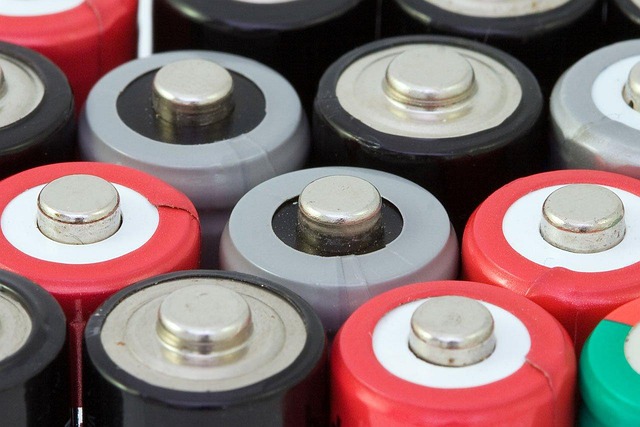Quantum computing promises to revolutionize technology by solving problems that are intractable for classical computers. At the heart of this emerging field lies the qubit, the quantum equivalent of the classical bit. Unlike classical bits, which represent either a 0 or a 1, qubits can exist in a superposition of both states simultaneously, enabling unprecedented computational power. Among the various physical implementations of qubits, superconducting qubits have emerged as one of the most promising candidates due to their scalability, tunability, and compatibility with existing microfabrication techniques. This research blog post explores the principles, designs, challenges, and future prospects of superconducting qubits in the quest for practical quantum computing.
What Are Superconducting Qubits?
Superconducting qubits are quantum bits implemented using superconducting circuits—electrical circuits that exhibit zero resistance when cooled below a critical temperature, typically near absolute zero (around 10-20 millikelvin). These circuits are made from materials like aluminum or niobium and operate in a regime where quantum mechanical effects dominate. The “superconducting” aspect refers to the phenomenon where certain materials, when cooled sufficiently, allow electrons to pair up and move without energy loss, forming a macroscopic quantum state.
The core component of a superconducting qubit is the Josephson junction, a nonlinear, non-dissipative element typically formed by sandwiching a thin insulating layer between two superconducting electrodes. This junction allows the circuit to behave as an artificial atom with discrete energy levels, which can be manipulated to encode quantum information. By applying microwave pulses, researchers can control the qubit’s state, enabling operations like superposition, entanglement, and quantum gates—the building blocks of quantum computation.
Types of Superconducting Qubits
Superconducting qubits come in several flavors, each with distinct characteristics tailored to specific trade-offs between coherence time (how long a qubit maintains its quantum state) and controllability. The three primary types are:
- Charge Qubits: These were among the earliest superconducting qubits, relying on the number of Cooper pairs (paired electrons in a superconductor) on a small superconducting island. Charge qubits are highly sensitive to electric fields, making them easy to control but susceptible to noise, which limits their coherence times.
- Flux Qubits: These qubits encode information in the direction of persistent current flowing in a superconducting loop interrupted by Josephson junctions. Flux qubits are tuned using magnetic fields, offering a balance between control and noise resilience, though they require precise magnetic field management.
- Phase Qubits: These operate based on the phase difference across a Josephson junction. While simpler to fabricate, phase qubits suffer from shorter coherence times and have largely been overshadowed by more advanced designs.
A major breakthrough came with the development of the transmon qubit, a modified charge qubit introduced by researchers at Yale in 2007. The transmon reduces sensitivity to charge noise by adding a large shunt capacitance, significantly improving coherence times while retaining ease of control. Today, transmons dominate the field and are used by leading quantum computing companies like IBM, Google, and Rigetti.
How Superconducting Qubits Work
Superconducting qubits operate in a highly controlled environment—typically a dilution refrigerator—to maintain their quantum properties. The qubit’s energy levels are defined by the interplay of capacitance, inductance, and the Josephson energy of the circuit. By tuning these parameters, researchers create a two-level system analogous to a spin-1/2 particle, with a ground state (|0⟩) and an excited state (|1⟩).
To manipulate the qubit, microwave pulses are applied at specific frequencies to drive transitions between these states or create superpositions (e.g., α|0⟩ + β|1⟩). Coupling multiple qubits via capacitors or resonators enables entanglement, a key resource for quantum algorithms. Readout is typically performed by coupling the qubit to a microwave resonator, where the qubit’s state alters the resonator’s frequency, which can then be measured with high precision.
Advantages of Superconducting Qubits
Superconducting qubits offer several compelling advantages that have propelled them to the forefront of quantum computing research:
- Scalability: They are fabricated using techniques borrowed from the semiconductor industry, such as photolithography, allowing for the integration of many qubits on a single chip. For example, Google’s Sycamore processor, which demonstrated quantum supremacy in 2019, featured 53 superconducting qubits.
- Tunability: The properties of superconducting qubits can be adjusted in real-time by varying external parameters like magnetic flux or voltage, providing flexibility in designing quantum circuits.
- Fast Gate Operations: Superconducting qubits support gate times on the order of nanoseconds, enabling rapid execution of quantum algorithms.
- Compatibility: Their reliance on microwave technology aligns with existing expertise in RF engineering, facilitating integration with classical control systems.
These strengths have made superconducting qubits a favorite for building intermediate-scale quantum computers, often referred to as NISQ (Noisy Intermediate-Scale Quantum) devices.
Challenges Facing Superconducting Qubits
Despite their promise, superconducting qubits face significant hurdles that must be overcome to achieve fault-tolerant quantum computing:
- Coherence Times: Quantum states are fragile and can decohere due to interactions with the environment, such as thermal fluctuations or electromagnetic noise. While transmons have pushed coherence times from microseconds to hundreds of microseconds, this is still far short of what’s needed for large-scale error correction.
- Error Rates: Quantum gates and measurements introduce errors, with current fidelities around 99-99.9%. For fault tolerance, error rates must drop below 0.1%, necessitating advances in error correction codes like the surface code, which requires thousands of physical qubits per logical qubit.
- Cryogenic Requirements: Operating at millikelvin temperatures demands complex and costly refrigeration systems, limiting accessibility and scalability outside specialized labs.
- Crosstalk and Scalability: As the number of qubits increases, unwanted interactions (crosstalk) between qubits and control lines become harder to manage, complicating the design of larger systems.
Addressing these challenges requires innovations in materials science, error correction, and hardware design—areas of intense research today.
Recent Advances and Milestones
Superconducting qubits have driven some of the most notable achievements in quantum computing. In 2019, Google’s quantum team used a 53-qubit Sycamore processor to perform a calculation in 200 seconds that they claimed would take a classical supercomputer 10,000 years, marking a milestone known as quantum supremacy (though debated by some, including IBM). IBM’s Quantum Experience platform has made superconducting qubits accessible via the cloud, while companies like Rigetti and D-Wave continue to push the boundaries of qubit count and performance.
Recent research has focused on improving coherence and error rates. For instance, advances in 3D cavity architectures and better shielding have extended coherence times, while novel error correction techniques, such as real-time feedback loops, aim to mitigate noise. Hybrid approaches combining superconducting qubits with other systems, like trapped ions or photonic qubits, are also being explored to leverage complementary strengths.
The Future of Superconducting Qubits
Looking ahead, superconducting qubits are poised to play a central role in the quantum computing landscape. Near-term goals include building NISQ devices capable of solving practical problems in chemistry, optimization, and machine learning—areas where quantum advantage might emerge before full fault tolerance. For example, simulating molecular interactions for drug discovery could benefit from the exponential speedup offered by quantum algorithms like the Variational Quantum Eigensolver (VQE), which is well-suited to superconducting platforms.
Long-term, the vision is fault-tolerant quantum computers with millions of physical qubits implementing logical qubits via error correction. This will require not only better qubits but also advances in control electronics, cryogenics, and software ecosystems. Collaborative efforts, such as those supported by xAI and other innovators, could accelerate this timeline by integrating AI-driven optimization into qubit design and operation.
Conclusion
Superconducting qubits represent a remarkable fusion of quantum physics and engineering, offering a tangible path toward quantum computing’s transformative potential. Their scalability and tunability have made them a cornerstone of current research, yet challenges like coherence and error rates remind us that the journey is far from over. As of April 06, 2025, the field is vibrant with progress, from lab breakthroughs to commercial prototypes, signaling that superconducting qubits may soon unlock new frontiers in science and technology. Whether solving climate models, cracking cryptographic codes, or exploring the mysteries of the universe, these tiny quantum circuits hold the key to a computational revolution—one pulse at a time.



